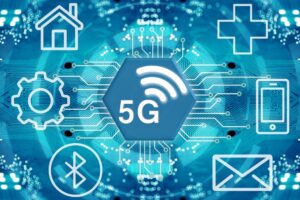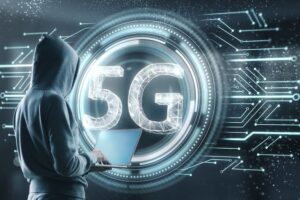The rollout of 5G infrastructure promises to revolutionize the way we live, work, and communicate. With speeds up to 100 times faster than 4G and the ability to support a vast array of connected devices, 5G has the potential to enable innovations in industries ranging from healthcare to transportation, entertainment, and beyond. However, despite its immense potential, rolling out 5G infrastructure on a global scale is a complex and challenging task.
The process involves not only upgrading existing networks but also addressing regulatory, technical, financial, and societal hurdles. In this article, we will explore the key challenges that telecom providers, governments, and stakeholders face in bringing 5G to every corner of the world.
Technological Challenges of 5G Deployment
1. Upgrading Existing Infrastructure
One of the primary technological challenges of deploying 5G is the need to upgrade existing infrastructure. Unlike previous generations of mobile networks, 5G requires a denser network of smaller cells, such as small cell towers, to provide consistent coverage. These smaller cells are essential to deliver the ultra-fast speeds and low latency that 5G promises.
However, this means that traditional cell towers, which were designed for 4G, will need to be supplemented or replaced with new, 5G-specific infrastructure. The shift from large cell towers to small cells requires significant investments in infrastructure, new antennas, and fiber optic cables. In some regions, this can be a costly and time-consuming endeavor, particularly in areas with limited access to modern infrastructure.
2. Frequency Spectrum Availability
Another significant technological hurdle is the availability of the frequency spectrum. 5G networks require access to a wide range of radio frequencies, particularly in the millimeter-wave spectrum, which can support the high data speeds that 5G promises. However, the radio spectrum is a finite resource and is already used by a variety of other communication systems, such as television broadcasts, satellite communications, and Wi-Fi networks.
Governments must allocate spectrum bands for 5G services, a process that involves careful planning and coordination. This can be particularly challenging in regions where the spectrum is already highly contested or where regulatory bodies have not yet finalized the allocation of frequencies for 5G use.
3. Ensuring Low Latency and Speed
The primary benefit of 5G is its ability to provide ultra-low latency, which is essential for applications like real-time remote surgery, autonomous vehicles, and augmented reality. However, achieving these low latency and high-speed standards across a global network is a significant technical challenge. The network infrastructure must be capable of processing data faster and more efficiently than ever before.
To achieve these speeds, telecom providers must build a highly efficient backhaul network, which connects the smaller 5G cells to the broader internet. This requires substantial upgrades to fiber optic cables, cloud data centers, and edge computing infrastructure. Ensuring consistent high speeds and low latency across diverse geographies, from urban centers to rural areas, poses a significant challenge for telecom providers.
Financial and Economic Challenges
1. High Cost of 5G Rollout
Rolling out 5G infrastructure requires a substantial financial investment. According to estimates, the global cost of building 5G networks could exceed $1 trillion over the next decade. This includes the cost of acquiring spectrum licenses, upgrading network hardware, building new infrastructure, and expanding fiber-optic networks. For telecom providers, this means significant capital expenditure at a time when many are already dealing with the financial pressures of maintaining existing 4G networks.
For smaller or less well-funded telecom companies, these high costs can be a significant barrier to entry, particularly in developing countries or regions with less robust financial infrastructure. The financial burden of upgrading infrastructure may delay the deployment of 5G, particularly in less economically developed regions.
2. Return on Investment (ROI) Uncertainty
While 5G offers the potential for massive growth and innovation, the long-term return on investment (ROI) remains uncertain for many telecom companies. The commercial success of 5G depends not only on network infrastructure but also on the adoption of 5G-enabled devices and the development of 5G-specific applications and services.
If the demand for 5G services does not meet expectations or if key industries fail to develop 5G-dependent applications, telecom providers may face difficulties in recouping their investments. This uncertainty creates a risk for investors and operators, which can delay or hinder the rollout of 5G in some regions.
Regulatory and Political Challenges
1. Spectrum Allocation and Licensing
As mentioned earlier, the allocation of spectrum for 5G is a critical step in the global rollout of the technology. However, spectrum licensing and regulatory approval can be a slow and complex process. Different countries have different regulatory frameworks, and some governments may prioritize other forms of technology over 5G, such as 4G LTE or fixed broadband.
The timing and efficiency with which governments allocate spectrum will play a key role in how quickly 5G can be deployed globally. Countries that are slow to allocate spectrum or that impose high fees for spectrum licenses may delay the rollout in those regions. Furthermore, ongoing disputes over spectrum allocation in some countries can create friction among telecom providers, slowing down the overall global deployment.
2. Global Coordination Challenges
Because 5G is a global technology, achieving international coordination and standardization is essential. Different countries have different regulations, policies, and approaches to deploying 5G. While organizations like the International Telecommunication Union (ITU) work to harmonize global standards for 5G, regional and national variations in regulatory frameworks can create challenges for multinational telecom operators.
For example, different countries may have varying rules about tower placement, environmental concerns, and safety standards for 5G networks. Some nations may have strict regulations concerning data privacy and security, which could hinder cross-border collaboration or the sharing of infrastructure. Lack of consistency in regulatory approaches can delay the global rollout and increase the complexity of building 5G networks in different regions.
3. Political and Geopolitical Issues
In addition to regulatory hurdles, political tensions between nations can impact the deployment of 5G infrastructure. The ongoing geopolitical conflict surrounding the role of Chinese tech companies, such as Huawei, in global 5G networks has introduced an additional layer of complexity to the rollout. Countries such as the United States and several European nations have raised concerns about the potential security risks of using Chinese-made equipment in their 5G networks, leading to bans and restrictions.
These geopolitical tensions have resulted in fragmentation in the 5G market, with different regions adopting different strategies and vendors. The lack of uniformity in 5G infrastructure across regions can hinder the development of a truly global 5G ecosystem.
Societal and Environmental Challenges
1. Public Perception and Health Concerns
The rollout of 5G has been met with some resistance, particularly from communities concerned about the potential health risks of the technology. Some individuals fear that the higher frequencies used by 5G networks could pose health risks due to increased exposure to electromagnetic radiation. Although scientific studies have not conclusively shown harmful effects from 5G technology, public skepticism persists.
Telecom providers and governments must address these concerns through education, transparent communication, and ensuring that 5G networks comply with safety regulations. Public acceptance of 5G technology will be a key factor in its successful deployment, particularly in residential and densely populated areas.
2. Environmental Impact
Building out 5G networks involves considerable environmental costs. The construction of new cell towers, the installation of fiber-optic cables, and the creation of new data centers all require resources and energy. Moreover, while 5G promises significant benefits for energy efficiency in certain sectors, the rollout itself will contribute to carbon emissions unless proper steps are taken to mitigate environmental impacts.
As the world becomes more conscious of climate change and sustainability, telecom companies will need to find ways to minimize the environmental footprint of their 5G infrastructure. This may include using renewable energy for data centers, recycling old equipment, and adopting eco-friendly construction practices for new infrastructure.
Conclusion
Rolling out 5G infrastructure globally presents a host of challenges, ranging from technological and financial hurdles to regulatory, political, and societal concerns. While the potential benefits of 5G—such as faster internet speeds, low latency, and the ability to support connected devices—are vast, overcoming these obstacles will require significant collaboration between governments, telecom providers, and industry stakeholders.
From upgrading network infrastructure to securing the necessary spectrum and addressing public concerns about health and the environment, the path to global 5G adoption is complex and multifaceted. However, with careful planning, investment, and international cooperation, the dream of a fully connected 5G world can become a reality, driving innovation, economic growth, and improved quality of life across the globe.




